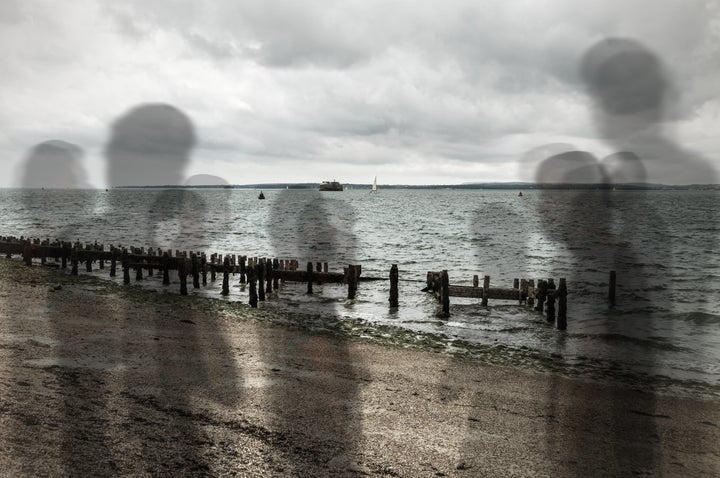
Psychosis typically shows up in adolescence or early adulthood, and around 100,000 young people will experience their first psychotic episode this year. But woefully little is known about how to prevent the devastating disorder in teens who are at high risk.
Now, a Canadian study offers new hope for early identification and prevention of psychosis. Psychiatrists at the University of Montreal identified a brain marker that can detect early vulnerability to the condition ― years before the onset of full-blown symptoms.
“Our research reveals that vulnerability to psychosis can be identified at an early adolescence period,” Dr. Patricia Conrod, a psychiatry professor at the University of Montreal and the study’s senior author, said in a statement.
The study, published last week in the American Journal of Psychiatry, showed that long before a person begins having psychotic episodes, the brain shows a heightened emotional response to both non-threatening and non-emotional cues.
When this occurs, the brain is essentially assigning significance to benign things in the environment that simply don’t call for an emotional or threat-based reaction. This neurological abnormality can manifest in perceiving everyday objects and events as being laden with sinister intent, and even in imagining things that simply aren’t there.
This finding aligns with what we already know about how psychosis develops. Some of the main behavioral symptoms, like delusions and paranoia, are caused by the tendency to over-attribute meaning and relevance to environmental stimuli. Psychotic delusions, then, can be understood as a way for the person to make sense of the heightened importance (often accompanied by a sense of threat) that they perceive in the world around them.
Predicting psychosis in the brain
For the study, Conrod’s team conducted cognitive and brain testing on over 1,000 European adolescents between the ages of 14 and 16. The teenagers’ brains were scanned while they engaged in cognitive tasks testing for things like reward sensitivity, processing of emotional and non-emotional cues, and inhibitory control (the ability to regulate one’s attention and behavior). The teens also completed self-reported questionnaires asking whether and how often they had experienced various psychiatric symptoms.
The researchers isolated a group of the 14-year-old participants who reported that they were already having occasional psychotic-like experiences, and found that the brains of these teenagers responded to non-emotional stimuli as if they had strong emotional import.
At 16 years old, around 6 percent of the teens in the study reported having psychotic symptoms like delusions, paranoia, and visual and auditory hallucinations. The researchers found that heightened brain reactivity to neutral stimuli at age 14 strongly predicted the emergence of future psychotic symptoms in the 16-year-olds.
The analysis also revealed cannabis use prior to age 16 to be highly predictive of psychotic-like tendencies in the 16-year-olds. This didn’t come at much of a surprise, as a growing body of research has shown a link between marijuana use and psychotic disorders, suggesting that the drug could trigger or worsen psychotic tendencies in people who are already at risk. (It’s also possible, however, that people with pre-existing psychotic tendencies are simply more likely to smoke weed.)
Known risk factors for psychotic disorders include genetics, childhood stress and trauma, inflammation and exposure to neurotoxins, substance abuse, and use of drugs such as marijuana and amphetamines.
New hope for prevention and treatment
Earlier identification could make a huge difference in delaying the onset of psychosis and possibly even preventing some of its most devastating expressions.
As of now, clinicians have little to offer when it comes to preventing psychosis. Predicting which adolescents with early warning signs will develop the condition isn’t easy, according to Thomas Insel, former director of the National Institutes of Mental Health. What’s more, we don’t yet have interventions proven to prevent psychosis in those who are at risk.
“Given the morbidity and mortality of psychotic illnesses, there can be little doubt that we need interventions to prevent its onset,” Insel wrote in an NIMH blog post. “Even delaying the onset of psychosis for five years could make a huge difference in outcomes.”
While it’s not yet clear whether heightened emotional reactivity in the brain could be modified using drugs or therapeutic interventions, the research team already has follow-up investigations underway. In any case, better tools for predicting psychosis can only help to improve prevention, treatment and patient outcomes.
“Early identification of psychosis vulnerability gives clinicians a large window of time in which to intervene on risky behaviors and key etiologic processes,” Conrod said. “Our team hopes that this study helps guide the design of new intervention strategies for at-risk youth, before the symptoms become clinically relevant.”
